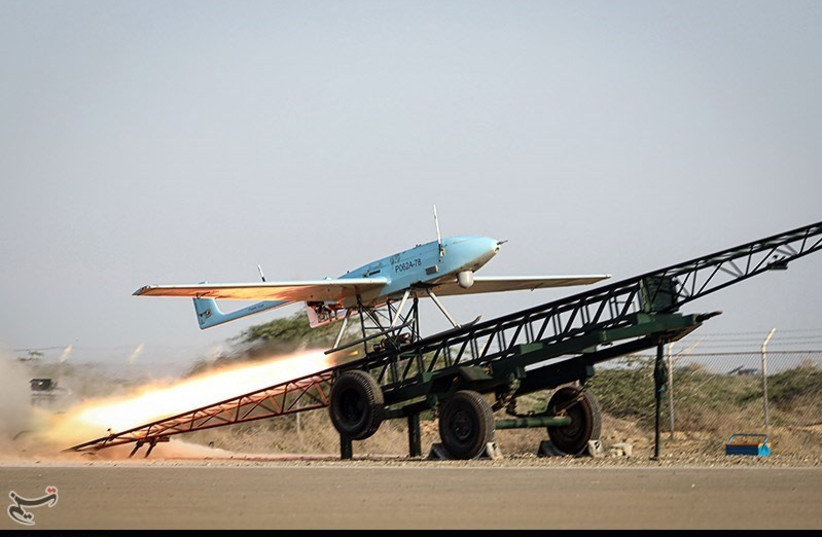The United States has responded to an attack on a US military base at the Jordan-Syria border that killed three soldiers and wounded around 40. Washington reported that it had attacked targets in Syria and Iraq, hitting more than 85 Iranian Revolutionary Guard Corps (IRGC) sites and associated formations.
The American response was in line with the predictions of most experts, who expected the Biden administration to blame Iran but refrain from direct retaliatory action. There is a complex strategic calculation behind this.
Interestingly, Iranian authorities have asserted that there are no IRGC bases or barracks in Syria and Iraq. We surmise, therefore, that all the bombed sites belong to groups loyal to but not directly affiliated with Tehran, such as the Popular Mobilization Forces (PMF) or Al-Hashd al-Shaabi and the Fatimiyoun Brigade. It is also worth noting that the US has defined its counter-attacks as only the beginning of retaliatory measures.
These attacks are a message to Iran and its proxies that the retaliation is ongoing and could be intensified or expanded. This is an attempt to deter these terrorist militias from further attacks on US bases or any other response to the attacks.
It took the US several days to decide on a response. This shows that sufficient time was taken to examine the options. It also confirms how sensitive the US is and that it cannot be mistaken in its calculations, especially as the atmosphere between Washington and Tehran is very tense.

There are those in the United States who insist on a direct military strike; others on addressing Tehran in clear and angry terms over the killing and wounding of American soldiers or with a policy of caution or attempts at containment that have continued since President Joe Biden took office but have not yielded clear results.
The fact that both sides are shying away from direct military confrontation is helping to reduce Iranian-American tensions. Iranian statements and positions agree that Tehran will not be the one to start a war. Previously, directives from Supreme Leader Ali Khamenei were leaked, stating that the Iranian leadership should stick to the strategy of strategic patience for as long as possible.
The Iranian regime is not interested in a direct war as long as it achieves its main objectives through its proxies facing Israel and the US on multiple fronts. In related news, The New York Times reported that Iran’s Supreme National Security Council held an emergency meeting to discuss the regional situation.
At the meeting, Khamenei gave instructions to “avoid a direct war with the US and distance Iran from the groups that have recently killed Americans in the region.” The newspaper reported that Iran is preparing to retaliate if the US strikes back. All armed forces and air defense systems have been put on high alert.
Ballistic missiles have been deployed along the border with Iraq. The American side pursued a gradualist strategy to dampen anger at home and not interfere in decisions that could lead to war against Iran. It has signaled to Tehran directly and indirectly that it was not interested in a military conflict.
Senior US politicians and officials have repeatedly stated that their country does not seek war or military confrontation with Iran. In addition, a phased response plan has been adopted at multiple levels over an extended period of time, as confirmed by US Secretary of State Anthony Blinken.
Both countries appear to want some kind of containment on a wider conflict
WHAT IS certain is that the option of direct war is out of the question for decision-makers in both Washington and Tehran for reasons related to the interests of the leaderships of both countries. The Iranian regime fears a military strike that would shake its image and status and would have the possibility of triggering chaos and internal unrest that could pave the way for the fall of the regime.
Therefore, the priority and options are to ward off the specter of a direct confrontation with the US, assuming that the aim is to preserve the stability and sustainability of the Iranian regime.
The American side seems to be in a more delicate position regarding concerns about the expansion of a regional conflict in the Middle East and the resulting negative consequences for US strategic interests and the security of Israel, Washington’s top ally in the region and in the world.
Not to mention the impact of such a potential conflict on the American presidential elections and, in particular, on President Biden’s chances of winning a second term.
The US military response was, therefore, a clear signal of Washington’s desire not to widen the circle of conflict.
The crisis triggered by the drone attack on US troops, however, goes deeper than the obvious consequences. Targeted attacks are a link in the chain of weakening American influence and undermining US deterrence. This can be inferred from the brazenness of the attacks by terrorist militias loyal to Iran. Added to this, the damage to the reputation of American weapons, the failure to repel an Iran-backed drone attack on the American base, and the failure of air defense systems.
This calls into question the effectiveness of such systems – particularly in the Middle East and Gulf region, where the greatest security threat to many countries in the region comes from Iran’s growing military capabilities.
The writer is a UAE political analyst and former Federal National Council candidate.
